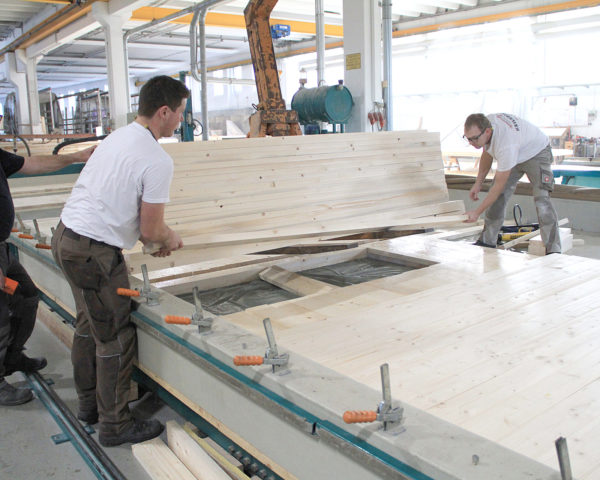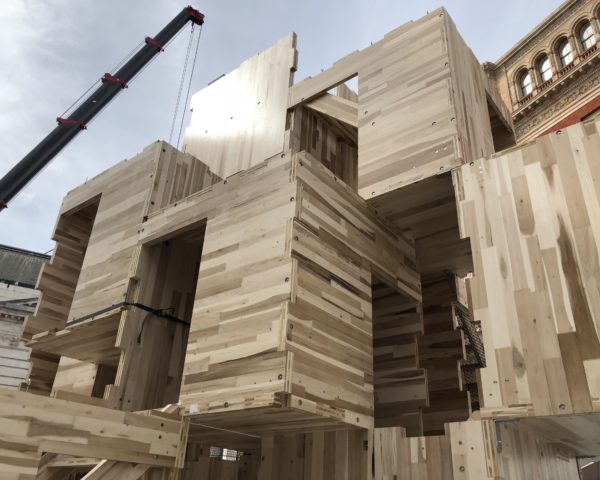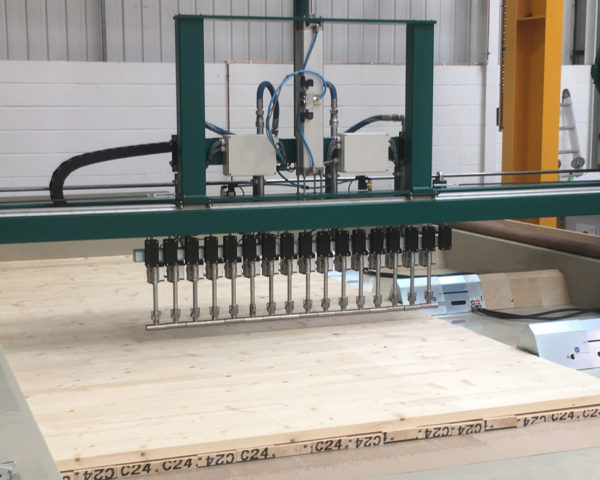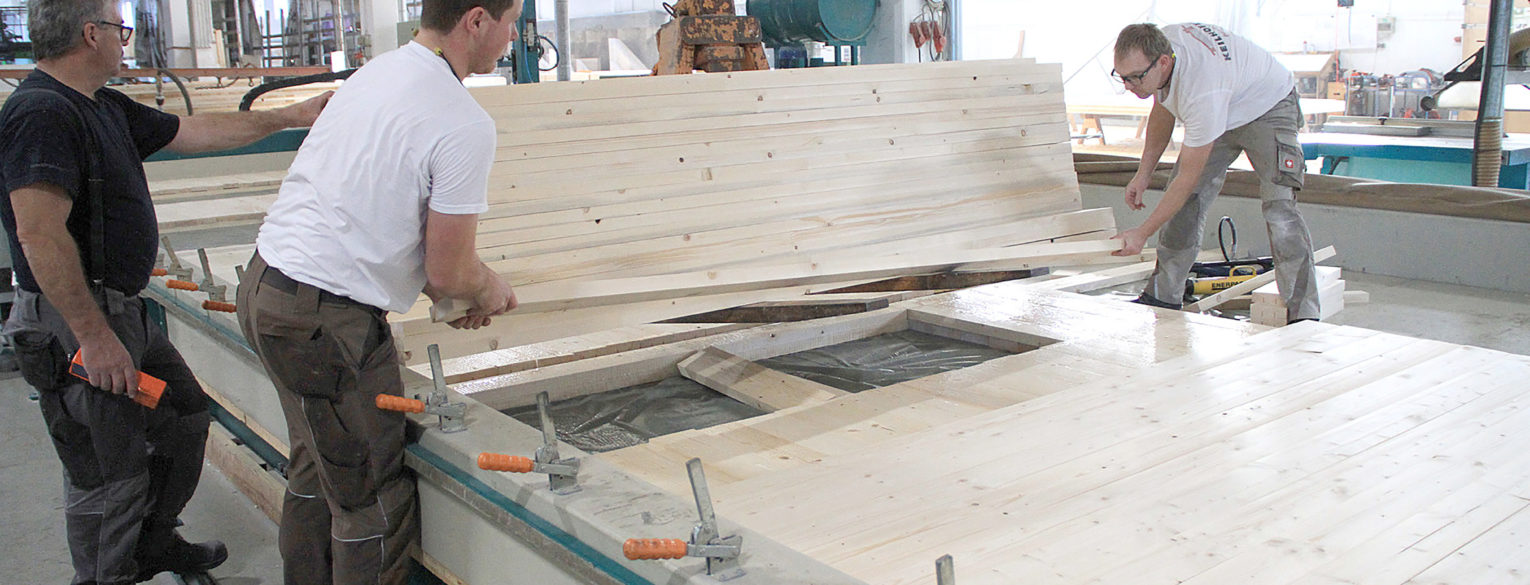Making your own CLT – is it worth it?
In times of raw material scarcity, many a timber construction company has wished they could produce CLT themselves. Benjamin Fankhauser from the company Woodtec offers plants that can do just that. We asked him about it.
Mikado, Edition 09 2021
Automatically Translated Using Google Translate:
mikado: What exactly do timber construction companies need so that they can manufacture cross laminated timber? What components do you offer for this?
Benjamin Fankhauser : Our starter kit includes an adhesive application portal for applying the adhesive and a vacuum press for pressing the panels. We have over 30 years of experience with gluing under vacuum and currently more than 60 presses from us are in use for the production of CLT.
Do I need a CNC system or can I cut the panels by hand?
Manual formatting is still widely used. Especially if you produce CLT for your own needs or always work with similar customers, you’ll want to use a simple cut-design and plan connections and transitions on walls and ceilings in such a way that the panels require little processing. For everyone who is more involved in the supplier role and would like to deliver more complex processing, the acquisition of a CNC is definitely an issue in the long term and then makes sense.
How many cubic meters of cross laminated timber can your system produce?
With the starter kit, three men can produce 2,000 to 3,000 m³ of CLT per year and shift with little effort. In three expansion stages with further mechanization such as conveyor portals, chain conveyors and vacuum suction plates, the workforce can be reduced to two men and the output to 10,000 m³
be increased step by step per shift and year.
mikado: What about the quality of the CLT? Is there an official certification?
Benjamin Fankhauser : For Woodtec solid wood there has been a general building inspectorate approval Z-9.1-576 since 2005. New customers can use it to produce BSP certified with the Ü mark from day one. Under license, without having to make your own special approval. The general building inspectorate approval (abZ) was revised in 2020, which means that even larger dimensions of both the panels and the raw material are permitted.
What other maintenance costs are there?
Since the vacuum actually only presses the wood, the press suffers little and is hardly sollicitated. The maintenance costs, accordingly, are low. For our customers, an average of five euros per gluing process is calculated for maintenance, i.e. around 3 to 4 m³ of wood.
What are the main advantages that in favour of such a system?
The investment and operating costs are low, and the associated business risk is low. For all companies that process CLT anyway, added value can be brought back into the company. And you become independent from large suppliers, not only in terms of price fluctuations, but above all in terms of delivery times. This means that you are not at the mercy of anyone, even with project postponements or incorrect deliveries, as was the case with many in the summer.
More News
Show more
Making your own CLT – is it worth it?
The leading timber journal mikado interviews Benjamin Fankhauser

First Hardwood CLT
BPS made of rosewood for MultiPly Pavilion in London on a vacuum press

Make your own CLT
BSP in Kundengrösse, gewünschter Qualität, Holzart und termingerecht herstell…

Low Investment and Maximal Flexibility
From small construction companies to the wood industry. What makes vacuum pre…

